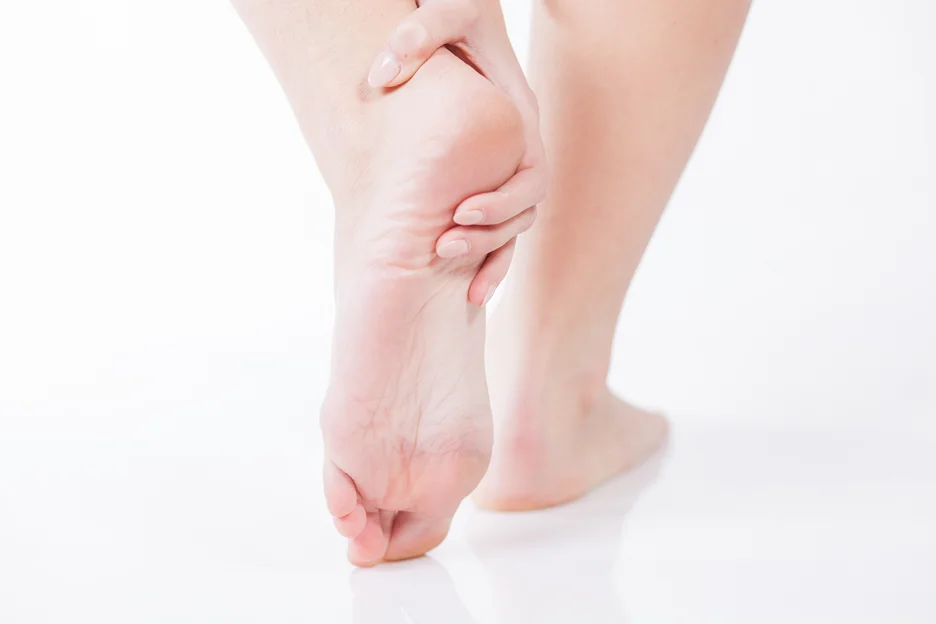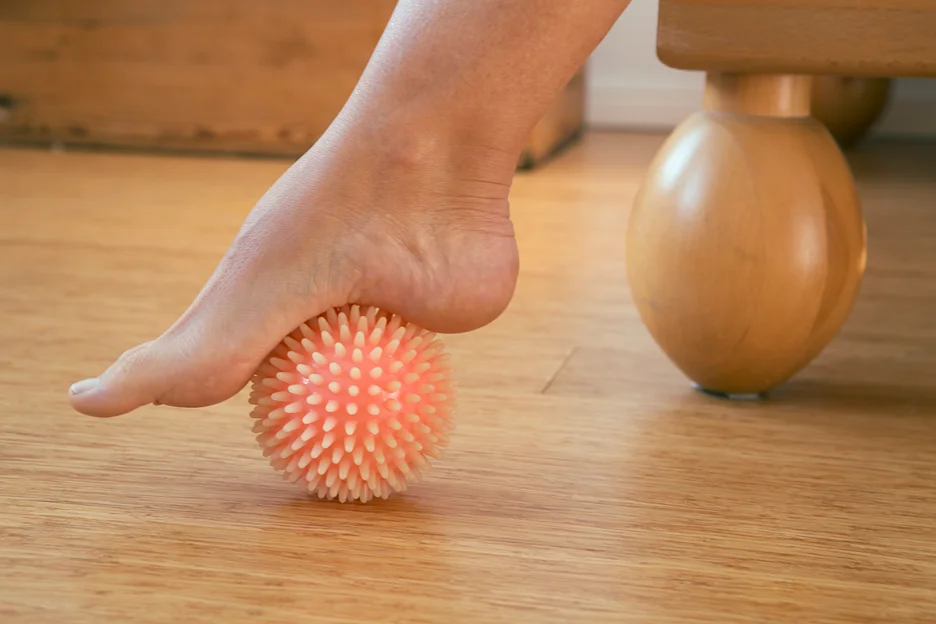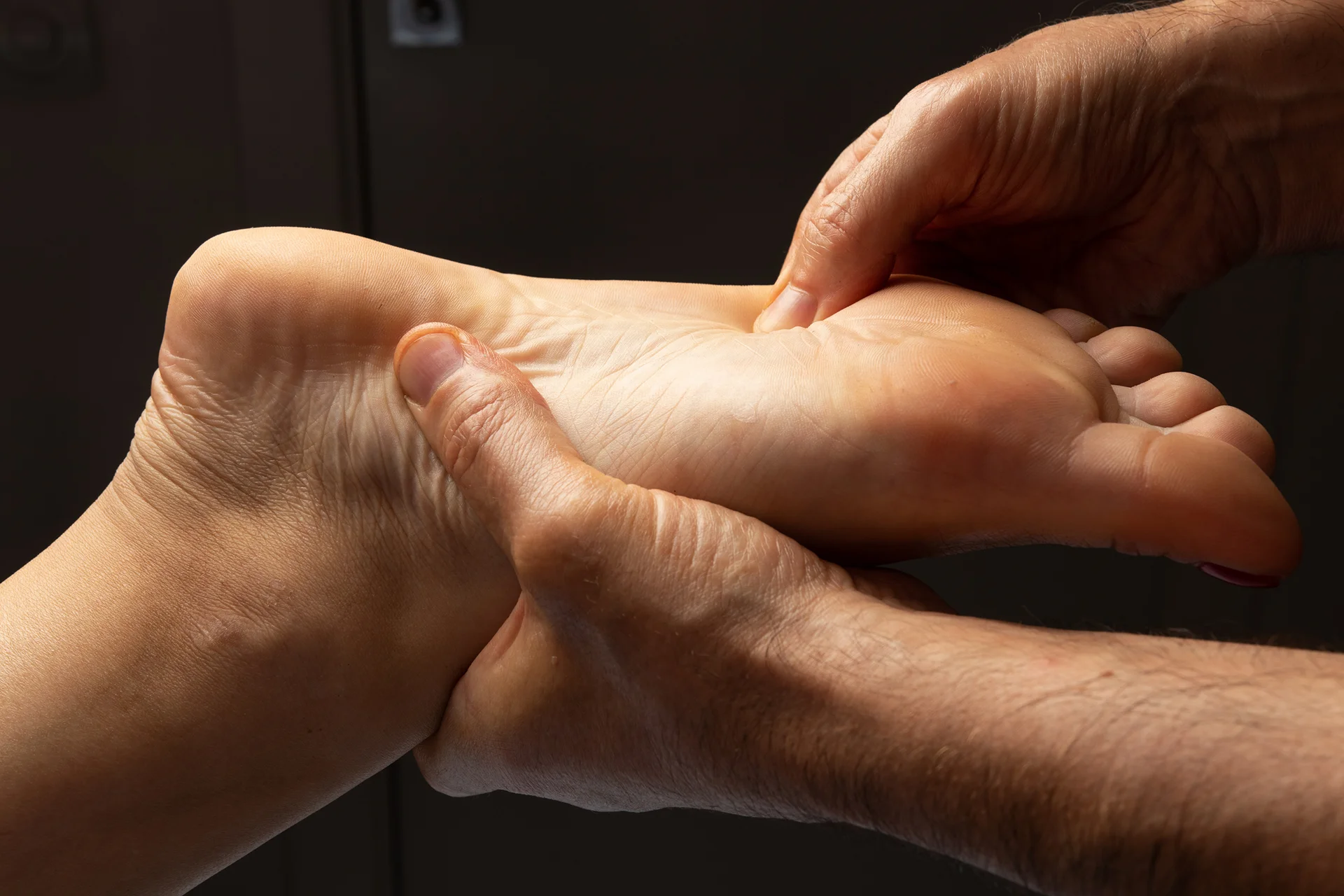Unlock the Power of Trigger Point Therapy for Easing Sciatica
Tired of letting sciatic nerve pain control your life? Discover how to ease agony fast using trigger point therapy – no drugs, surgery or doctors required.
Inside this guide, you’ll uncover secrets that pain management specialists use to give patients lasting sciatica relief. Target painful trigger points, melt away referred pain, and stop sciatic flare ups for good.
Follow simple, illustrated instructions to find and treat trigger points in your glutes, hips and thighs. Wave goodbye to that sharp, shooting pain down your leg with tools you can use anytime, anywhere.
What Are Trigger Points for Sciatica?

Trigger points are hyperirritable spots within a muscle that develop from overuse, poor posture, trauma, or compensation for an injury. These tight, rigid knots restrict blood flow and oxygen to the muscle, resulting in pain, muscle shortening, and weakness.
Trigger points also lead to referred pain in predictable patterns. For example, trigger points in the gluteus medius can generate sciatica-like pain down the back of the thigh, even though the gluteus medius is not directly related to the sciatic nerve.
There are two main trigger points in the feet that can create referred pain along the path of the sciatic nerve, which runs from the low back, through the buttock and down the back of the leg:
| Trigger Point | Location | Referred Pain Pathway |
| #1 | Center of the arch of the foot | Follows the tibial branch of the sciatic nerve, radiating into the calf |
| #2 | Inside edge of the heel, just behind the ankle bone | Tracks the peroneal branch of the sciatic nerve, radiating into the side of the lower leg |
In the case of true sciatica stemming from nerve root impingement, trigger points develop as a secondary compensation injury from altered posture and gait. Releasing these trigger points can provide significant relief until the underlying nerve root issue is addressed.
How To Locate and Massage Trigger Points for Sciatica
It takes practice to develop the palpation skills required to pinpoint trigger points. Here are some tips on locating common trigger points related to sciatic nerve pain:
Iliopsoas Trigger Points
The iliopsoas muscle is a frequent culprit in sciatica. Sit with one leg outstretched, and use your fingers to feel for tense bands running vertically in the front of the hip. Pain will likely be felt with compression. Hold pressure for 60-90 seconds to release.
A study reveals that out of 6 patients who had pain and weakness going from their low back down their leg, 5 (83%) got better, after receiving non-surgical treatments, including Iliopsoas trigger point therapy.
Gluteal Trigger Points
Lying on your side, use your fingers or a massage ball to explore the upper outer buttock. Feel for exquisitely tender spots in the tense muscle bands, especially the piriformis muscle deep in the glutes. Apply pressure and massage cross-fiber over the trigger point.
Heel Trigger Points
Sit with one leg crossed over the opposite knee. Press your thumb into the inner heel just behind the ankle bone until you find a sensitive nodule, then massage with small circles. Switch legs and repeat. This stimulates both heel trigger points.
Proper trigger point release requires quite a bit of pressure – enough to elicit discomfort without increasing sciatic pain. Always start gently and slowly increase pressure. Breathe deeply to help the muscles relax. With regular treatment, the knots will soften and sensitivity will decrease.
Relieve Sciatic Nerve Pain. Kaly Connects You to Physical Therapists for Trigger Point Treatment and Recovery Plans
What is the Sciatica Pain Referral Pattern Associated with Trigger Points?
Because the sciatic nerve runs the length of the leg, sciatica pain can radiate anywhere along its path. However, certain trigger points generate very specific pain patterns that mimic or contribute to sciatica:
Iliopsoas trigger points refer pain down the front of the thigh, mimicking femoral nerve pain. This can overlap with sciatica pain down the back of the thigh.
Piriformis and other gluteal trigger points create a deep aching pain down the back of the leg into the calf. This pattern perfectly overlays true sciatic nerve pain.
Trigger points in the quadratus lumborum, a deep core muscle, radiate pain into the buttock which can worsen sciatica pain.
Foot trigger points behind the ankle bone and in the arch produce sharp, tingling pain into the heel and along the outer calf, similar to sciatica distributions.
By recognizing pain referral patterns from key trigger points, you can strategically target treatment to the most relevant muscles contributing to your sciatic nerve pain. Combine this with other techniques like stretches, nerve glides and core strengthening for the best relief.
Sciatica Trigger Point Release Techniques

There are several methods for releasing trigger points associated with sciatica:
Trigger Point Injections
One of the fastest ways to deactivate trigger points is through injections of medication directly into the trigger point. This immediately stops the pain signals and allows the knot to release. Trigger point injections are often combined with physical therapy exercises.
Dry Needling
Similar to injections, dry needling disables trigger points by inserting a thin filament needle directly into the trigger point without medication. Disrupting the contracted tissue helps it relax and loosen up. This can provide rapid relief for pseudo sciatica from gluteal trigger points.
Manual Trigger Point Release
Applying direct, prolonged pressure to a trigger point with the fingers, a massage tool or a tennis ball against the floor can help release it, provided the pressure is not excessively painful. This is commonly used for self-treatment of foot trigger points related to sciatica.
Myofascial Release
Myofascial release is a gentle hands-on technique often used by physical therapists and massage therapists. The practitioner locates trigger points and tender areas, then applies gentle traction to the fascia and muscles to encourage release. This helps with stubborn trigger points in the buttock muscles.
Stretching and Strengthening Exercises
Certain stretches and exercises put tension on muscles in ways that can help loosen up trigger points, especially when combined with massage techniques. Hip flexor and piriformis stretches are examples for sciatica trigger points.
No matter what technique is used, it’s important to avoid applying too much pressure too quickly, which can worsen trigger points. Work up to deeper pressure gradually. Consistent treatment provides the best outcomes.
Unlock Lasting Relief from Nerve Pain Through Trigger Point Therapy

Trigger point massage provides a highly effective way to find relief from sciatic nerve pain and related symptoms. By learning to locate and treat trigger points in the feet, hips, glutes and back, you can take control and manage sciatica flare-ups on your own.
The key is to use proper technique – moderate pressure applied to release contracted tissues. Be patient and consistent for best results. Over time, you will deactivate trigger points, restore muscle flexibility, improve circulation and put an end to referred pain down the leg.
For advanced trigger point treatment and recovery strategies, consult with a pain management specialist or physical therapist through Kaly. Kaly conveniently connects you to leading experts in your area who can evaluate your condition, provide personalized trigger point therapy, and design an integrated treatment plan. Regain mobility and quality of life with the right sciatica care.
Don’t let nerve pain hold you back any longer. Sign up for Kaly today to get matched with a specialist and find relief through proven trigger point treatments.
